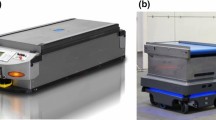Abstract.
In practice, order acceptance and production planning are often functionally separated. As a result, order acceptance decisions are made without considering the actual workload in the production system, or by only regarding the aggregate workload. We investigate the importance of a good workload based order acceptance method in over-demanded job shop environments, and study approaches that integrate order acceptance and resource capacity loading. We present sophisticated methods that consider technological restrictions, such as precedence relations, and release and due dates of orders. We use a simulation model of a generic job shop to compare these methods with straightforward methods, which consider capacity restrictions at an aggregate level and ignore precedence relations. We compare the performance of the approaches based on criteria such as capacity utilisation. The simulation results show that the sophisticated approaches significantly outperform the straightforward approaches in case of tight due dates (little slack). In that case, improvements of up to 30% in utilisation rate can be achieved. In case of much slack, a sophisticated order acceptance method is less important.
Similar content being viewed by others
Author information
Authors and Affiliations
Corresponding author
Additional information
Correspondence to: E.W. Hans
Rights and permissions
About this article
Cite this article
Ebben, M.J.R., Hans, E.W. & Olde Weghuis, F.M. Workload based order acceptance in job shop environments. OR Spectrum 27, 107–122 (2005). https://doi.org/10.1007/s00291-004-0171-9
Issue Date:
DOI: https://doi.org/10.1007/s00291-004-0171-9




